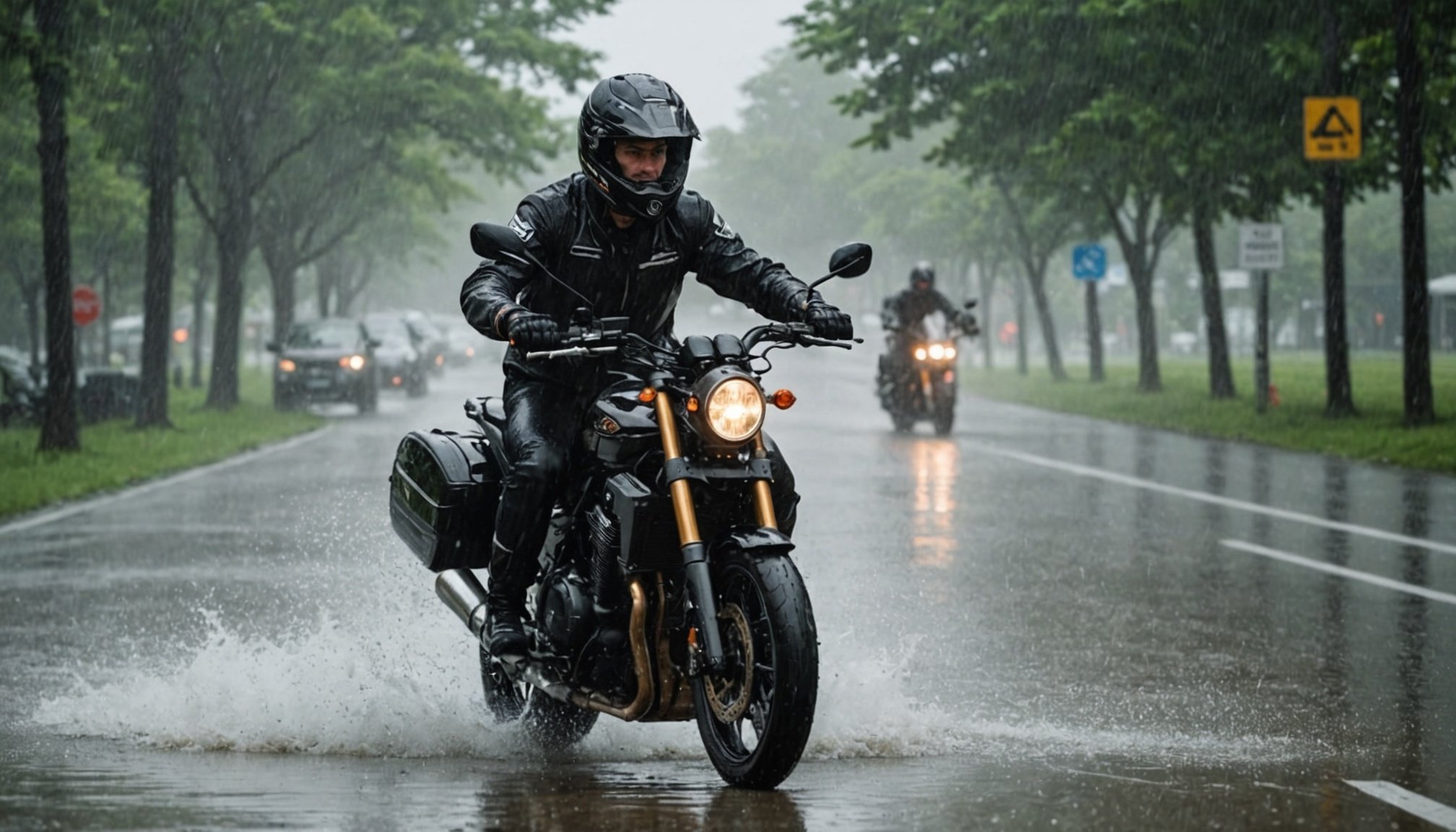Motorcycle riding is exhilarating, offering a sense of freedom and adventure that few other activities can match. However, when weather conditions turn sour, with heavy rains pouring down, the thrill can quickly morph into a daunting challenge. Riding a motorcycle in the rain requires not just courage but also a keen understanding of safety measures to ensure you stay safe on the road. Don your best gear and equip yourselves with essential tips and tricks to keep your rides enjoyable, even when the clouds decide to pour. In this article, we explore the best practices for traversing wet conditions, ensuring your two-wheeled adventures remain both exciting and secure.
Preparing Your Gear for Wet Weather
Before setting out on a ride in heavy rain, the proper gear can make all the difference between a comfortable journey and a miserable one. It starts with selecting the right clothing: a waterproof jacket and pants are non-negotiable. These items will keep you dry and warm, preventing water from seeping in during your ride.
In parallel : What are the regulations for carrying passengers on motorcycles in the UK?
For boots, opt for those specifically designed for motorcycle riding in wet conditions. They should be waterproof, offering protection against puddles and splashes while providing adequate grip on the bike. Gloves are equally important; wet hands can easily slip, compromising your control. Look for pairs with waterproof and breathable qualities to maintain dexterity.
Having a quality helmet is crucial. Ensure it has an anti-fog visor, which enhances visibility by preventing condensation from obstructing your view. Additionally, some helmets come with a rain visor, directing rain away from your face.
Also read : What factors influence the resale value of a motorcycle?
Finally, consider using reflective accessories. Visibility becomes drastically reduced in rainy conditions, and these additions can help other road users see you. By prioritizing the right gear, you’ll keep yourselves comfortable and focused solely on the ride, rather than battling the elements.
Adjusting Riding Techniques for Rain
Riding a motorcycle in the rain requires a different approach than when navigating dry roads. The key is to adapt your riding techniques to the wet conditions to maintain control and safety.
Firstly, always start your journey by checking your tires. Ensure they have adequate tread depth to provide the necessary grip on slippery surfaces. Smoothened or worn-out tires can be perilous, as they offer little traction on wet roads.
Next, adjust your speed. The road surface becomes exceedingly slick when wet, reducing the friction between your tires and the road. By slowing down, you give yourselves more time to react to unexpected situations, such as sudden stops or swerves.
Braking should be gradual and controlled. Applying brakes too suddenly can cause your bike to skid. Utilize both front and rear brakes simultaneously, applying gentle pressure to avoid locking your tires.
Keep a safe distance from other vehicles. The stopping distance increases significantly on wet surfaces, and maintaining a larger buffer zone gives you ample time to react.
Finally, take turns with caution. Wet conditions can cause the bike to slide out from under you. Leaning less into turns and making wider arcs can help minimize the risk of losing traction. These adjustments, though minor, can significantly enhance the safety and enjoyment of your ride in the rain.
Understanding Road Dynamics in Wet Conditions
When the rain begins to fall, the road transforms in ways that affect your ride. It’s essential to understand these changes to navigate safely.
One of the first things to note is the presence of water on the road. Puddles, though seemingly harmless, can conceal potholes or debris. Approach them cautiously, or better yet, avoid them entirely when possible.
Aquaplaning, or hydroplaning, occurs when tires lose contact with the road due to a layer of water. To counteract this, reduce your speed and avoid sudden movements. Maintaining a steady throttle and steering gently can help regain traction.
Oil and other residues rise to the surface in the first few minutes of rain, creating a slippery film on the road. Be particularly careful during this time, as traction is at its lowest.
Manhole covers, painted lines, and metal bridge expansion joints turn slippery when wet. Approach these with caution and avoid heavy braking or accelerating while on them.
In urban settings, be wary of crosswalks and intersections. These areas see heavy traffic, and the constant stopping and starting can create slick spots.
By recognizing these potential hazards and adjusting your riding style accordingly, you’ll be better equipped to handle any challenges the rain-soaked road throws your way.
Post-Ride Care for Your Bike and Gear
After navigating the rain, it’s crucial to tend to both your bike and gear to maintain their longevity and performance.
Start by drying your motorcycle. Water can accumulate in crevices, leading to rusting if left unchecked. Use a soft cloth to wipe down all surfaces, paying special attention to the chain, tires, and seat. Applying a silicone spray to metal components can act as a barrier against moisture.
Inspect your brakes and other moving parts to ensure they haven’t suffered water damage. If you notice any squeaking or reduced responsiveness, further inspection or professional servicing might be necessary.
Your gear also needs attention. Hang your jacket, pants, and gloves in a well-ventilated area to dry thoroughly and prevent mildew. You can also utilize a boot dryer to remove moisture from your footwear.
Helmets with removable liners can be taken apart and cleaned. Besides removing any moisture, this prevents any musty odors from developing.
Lastly, evaluate your tires for any sharp objects that may have embedded themselves during your ride. Regularly checking tire pressure ensures you stay ready for your next adventure.
By investing a bit of time into post-ride care, you preserve the quality of your bike and gear, ensuring they’re always in top shape for future rainy day rides.
Riding a motorcycle in heavy rain can be a challenging yet rewarding experience, provided you’re equipped with the right knowledge and tools. By preparing your gear, adjusting your riding techniques, understanding road dynamics, and taking care of your bike post-ride, you ensure a safe and enjoyable journey, regardless of the weather. With rains being a part of the riding experience, mastering these best practices not only enhances your skills but also your confidence on the road. Whether it’s a sudden downpour or a persistent drizzle, you’ll be ready to face the elements head-on. Remember, while the rain may appear daunting, with the right preparation and mindset, it can become just another exciting aspect of your motorcycling adventures.**











